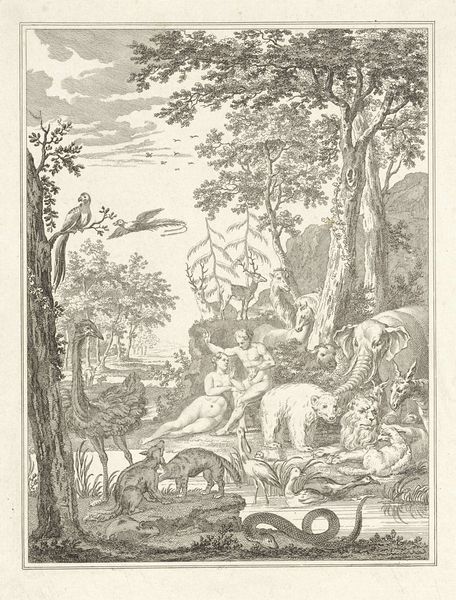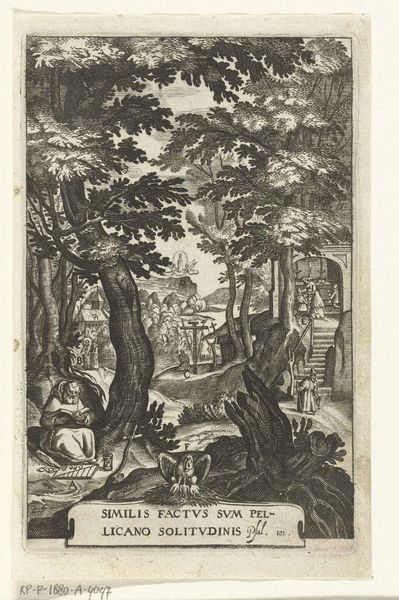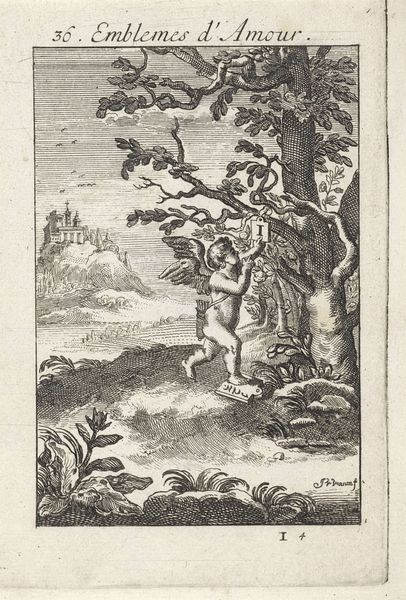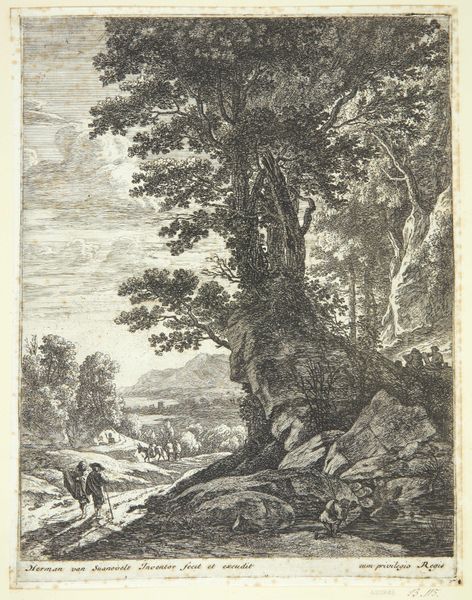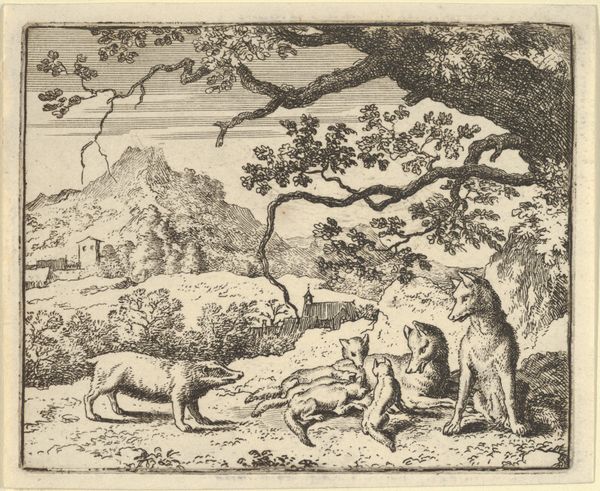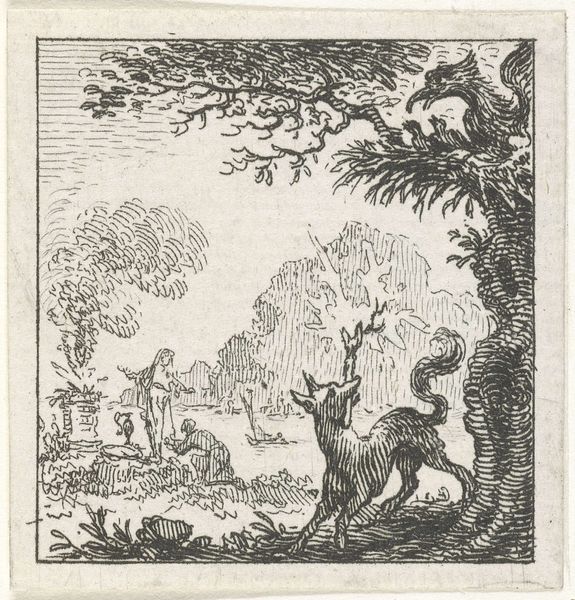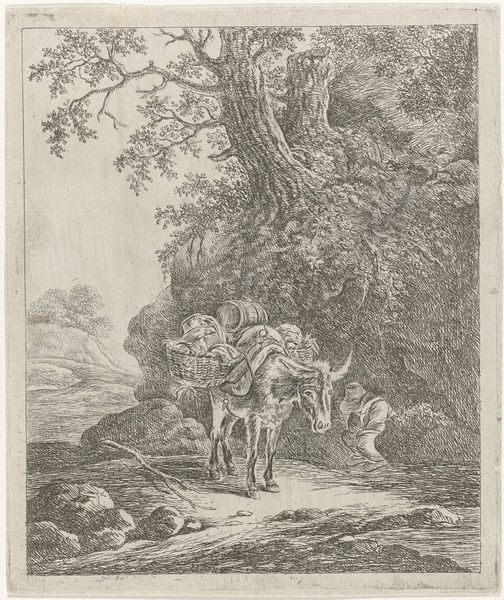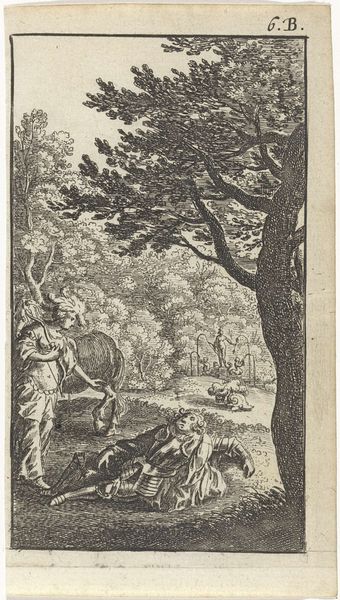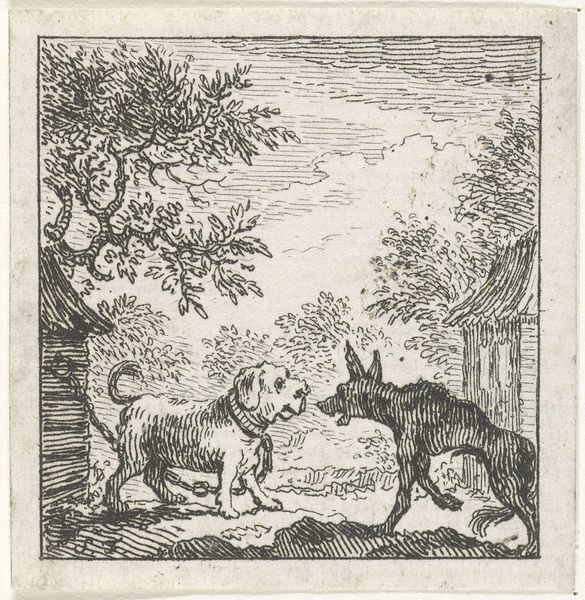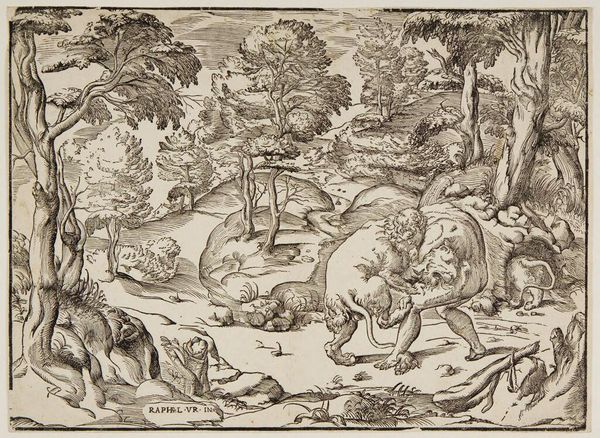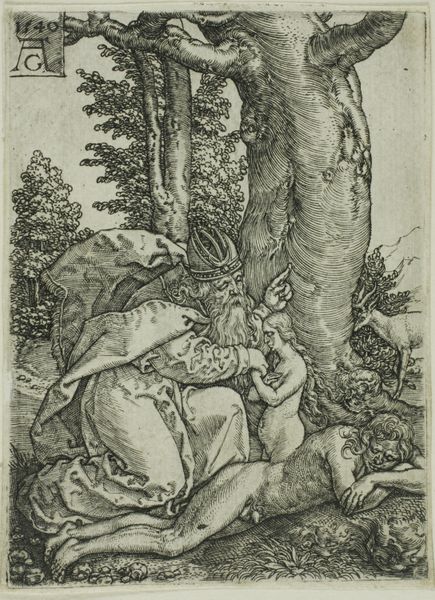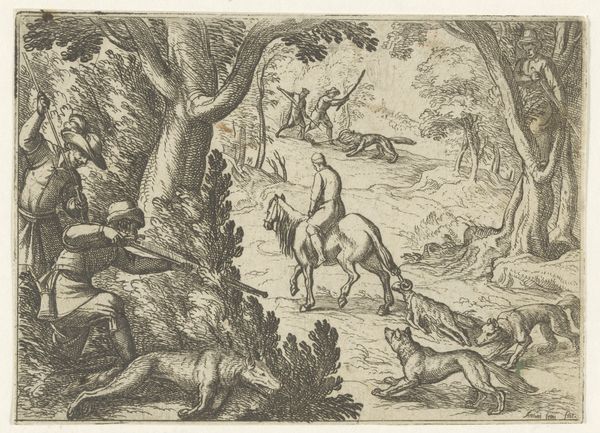
print, engraving
#
animal
#
dutch-golden-age
# print
#
dog
#
landscape
#
figuration
#
engraving
Dimensions: height 205 mm, width 156 mm
Copyright: Rijks Museum: Open Domain
Curator: Hendrick Hondius I, a Dutch printmaker active during the Golden Age, created this engraving titled "Landscape with a Goat, a Moose and Two Dogs" in 1644. The work is currently held in the collection of the Rijksmuseum. What strikes you upon seeing it? Editor: Immediately, I see a symbolic landscape—a tapestry of interconnected elements conveying deeper, perhaps moralizing, meaning. The contrast between the domesticated dogs and the wild elk is really intriguing. Curator: It is quite striking. Hondius’s positioning of these figures in relation to one another offers insights into Dutch Golden Age ideas about the relationship between humans and nature. The inclusion of these particular animals is no accident either, the moose being an exotic rarity at the time. Editor: Precisely. Exotic animals were included to invoke wonder and perhaps, a connection to distant, uncharted lands, full of undiscovered meanings. And look at the way the light emphasizes the tree’s form as an organic, protective structure, contrasted against the hunting scene playing out at the edges of the clearing, full of menace and threat. Curator: I am particularly interested in that barely visible hunting party. If we situate this artwork within a wider framework, we could see it reflecting anxieties about societal change, such as the rise of mercantile capitalism and increasing global contact, leading to social upheaval and threatening traditional rural ways of life. The animals, specifically the elk and the goat, are representations of vulnerable resources. Editor: You bring up a great point. Considering the allegorical aspect is key. There’s text at the bottom that appears to provide a direct moral commentary. In essence, “We should not sleep together, lest the goat and elk deceive us." A rather direct message cautioning against complacency and deception. Curator: The engraving invites discussion on the power dynamics between domesticity and the wilderness, highlighting human interaction with the natural world. It encapsulates early modern attitudes toward expanding global networks, and, like you noticed, anxieties regarding deception or unseen dangers. Editor: A simple engraving that reveals volumes. The blending of mythology and realism makes the overall composition enduringly relevant and beautiful. Curator: Absolutely. Its blend of social commentary and detailed depiction opens a window into the mindset of 17th-century Dutch society.
Comments
No comments
Be the first to comment and join the conversation on the ultimate creative platform.
